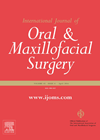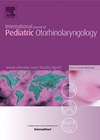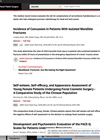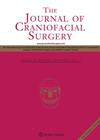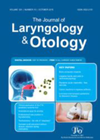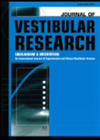
Journal Reviews archive for May 2016
Changes in airway dimensions after orthognathic surgery
This is a systematic review of meta-analysis evaluating the effect of different types of orthognathic surgery on the cross sectional area and volume of the upper airway as assessed using CT or MRI. They found 28 articles of which only...
What can the anterior cranial fossa fracture pattern tell us?
This assessment involves 81 patients treated between two regional major trauma centres in the UK. Fifty sustained a predominantly anterior directed force and 31 a lateral impact. They found that anterior impacts reduce the incidence of fracture propagated beyond the...
Paediatric lymphadenopathy – helpful decision making
The authors present a very helpful algorithm to manage cervical lymphadenopathy in children. The goal of managing children with inflamed lymph glands is to identify the rare malignant case and not over-investigate the vast majority of benign reactive swellings –...
Concussion and isolated mandible fractures – are we asking the right questions?
Concussion and isolated mandible fractures – are we asking the right questions? The mandible is one of the most commonly fractured craniofacial bones. A significant force is required to bring this about. Hence the authors hypothesised that concussion after a...
Are elective facelifts a good idea after head and neck cancer radiotherapy?
The aim of this study was to assess the safety of elective cervicofacial rhytidectomy following radiotherapy for head and neck squamous cell carcinomas (HNSCC). A greater proportion of HNSCC patients are infected with certain strains of the human papillomavirus, which...
Maternal angst
This paper confirms the anxiety that a mother experiences when their child undergoes surgery. The paper focuses on adenoidectomy and adenotonsillectomy for moderate to severe upper airway obstruction showing admirably how anxiety reduces following surgery. The authors recruited 66 mothers...
Does albumin have an effect on nasal polyposis?
Sometimes a short paper catches your eye! What causes chronic rhinosinusitis? What causes polyps? Fungi? Biofilms? Allergy? Maybe the lack of albumin? The two authors of this short paper present data that may suggest that the lack of albumin can...
Division of tongue tie helps breast feeding
The need for frenotomy in children with tongue tie is not universally accepted. It is however understood that among other problems, such as impaired speech, tongue tie impedes breast feeding possibly leading to early weaning. Therefore, with recent resurgence of...
A comparison of cold dissection, coblation and diode laser tonsillectomy
Excellence in tonsillectomy is based on the time taken, blood loss and rapid recovery with minimal pain. In this study, 120 children underwent tonsillectomy by three methods, namely cold dissection, coblation and diode laser dissection in three randomly allocated groups...
Influence of Helicobacter pylori infection in otitis media with effusion
Otitis media with effusion (OME) affects 20% of children and 10% have a recurrent problem. The incidence of Helicobacter pylori infection in children ranges from 15 to 46%. This study investigates how the presence of Helicobacter pylori infection affects treatment...
How effective is vestibular rehabilitation in bilateral vestibular failure?
In patients with bilateral vestibular hypofunction (BVH), the outcome of vestibular rehabilitation is mixed. The aim of the study was to identify factors associated with outcome of vestibular rehabilitation (VR) in patients with BVH. A retrospective case notes review identified...
International classification of BPPV
In the past few years, the Bárány Society has made great strides in defining and classifying vestibular disorders along the lines of the international classification of diseases. This article addresses the diagnostic criteria for BPPV, the commonest cause of vertigo....

